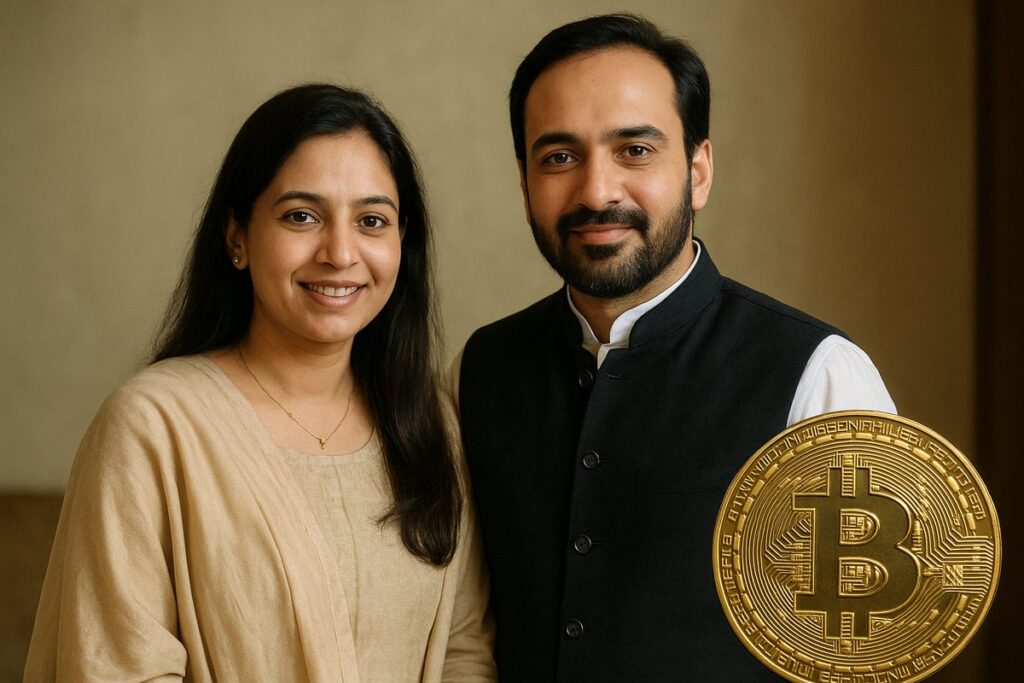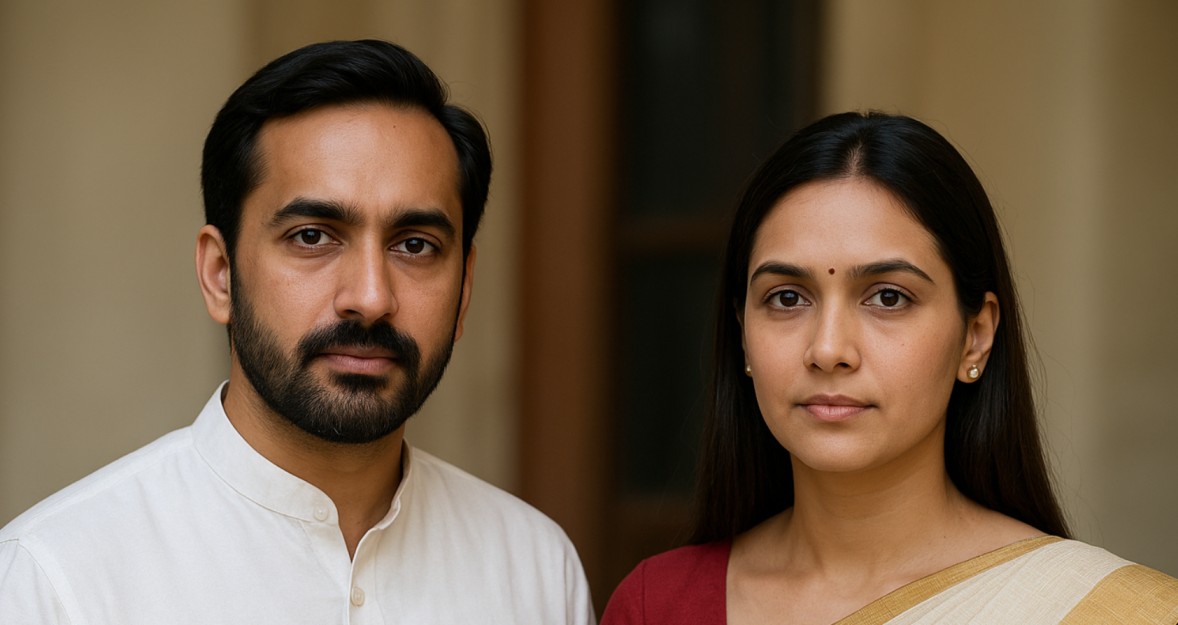Email :256
What the disclosure says
- As of March 31, 2025, Jayant Chaudhary declared ₹21,31,630 in cryptocurrency/virtual digital assets (VDAs).
- His spouse, Charu Singh, declared ₹22,41,951 in crypto holdings.
- Combined, that’s over ₹43 lakh in crypto assets.
- In the previous year’s filing (June 2024), the amounts were lower: around ₹17.9 lakh for Chaudhary and ₹19 lakh for his spouse — thus showing an increase (~19% for him; ~18% for her).
- The source of the investment is listed as “personal savings”, and the disclosure does not specify which specific cryptocurrencies or tokens are held.
Why this is significant
- First among Union Council of Ministers to explicitly list crypto
Chaudhary is reportedly the first Union Minister in India to include crypto/VDAs in the annual asset & liabilities disclosure. This sets a precedent in terms of transparency. - Growth in holdings despite volatility
The fact that values increased over the year suggests either appreciation in crypto prices, additional purchases, or a combination. For people in high public office, even moderate holdings in crypto can pose questions of risk, oversight, perception, etc. - Regulatory grey zones
- Although the Indian government has introduced taxation on gains from VDAs, and some regulatory steps (like bringing virtual digital asset transactions under the Prevention of Money Laundering Act, PMLA) have been taken, crypto remains largely unregulated in many other respects.
- There is no requirement so far mandating all authorities to collect crypto-asset data systematically. The government does collect income-tax based data if there are gains, etc., but broader regulatory frameworks and disclosures are still evolving.
- Public trust & political optics
When politicians disclose crypto assets, it raises multiple issues:- Do these holdings influence their policy choices (or vice versa)?
- Are there conflicts of interest if they have stakes in specific assets that might benefit from regulation (or deregulation)?
- Does this transparency help in normalizing crypto, or does it cause backlash among those critical of crypto volatility, misuses (fraud, money laundering)?
- Market message
For everyday investors, this kind of disclosure sends a signal that crypto is no longer a fringe ‘speculative’ asset but one that high-profile people are holding openly. It could boost confidence among some segments, though it might also draw scrutiny from regulators, media, and civil society.
Regulatory / Policy context in India
- Taxation
Income from virtual digital assets is taxed under the Income-tax Act. Profits from crypto are taxed at specific rates, and there may be rules around deduction, losses etc. - Anti-Money Laundering (AML) / PMLA
VDAs are subject to obligations under the Prevention of Money Laundering Act since March 2023. - Regulation status
Despite the above, many aspects remain unregulated:- No unified regulatory body with full oversight of crypto exchanges, token issuances, stablecoins, etc.
- The government and RBI have repeatedly issued warnings about volatility, fraud, risk to investors.
- Also, as per recent statements, government does not collect data on all crypto holdings directly.
- Disclosure norms for public officials
There are legal requirements for asset declarations for members of Parliament, ministers etc., including immovable/movable property, financial instruments, etc. Interestingly, crypto/VDAs are not yet standard in these disclosures — which makes this disclosure by Chaudhary unusual and possibly a sign of increasing mainstream acceptance.
Implications
Here are some possible implications of this disclosure, both immediate and longer-term:
| Area | Possible Impacts |
|---|---|
| Policy / Regulation | May trigger more demands for detailed regulatory framework: what kinds of digital assets are allowed, how to register exchanges, how to protect consumers, how to handle taxation and compliance in a consistent way. |
| Other Politicians / Public Officials | Could set a benchmark. Others may follow suit (disclosing crypto), either because of transparency norms or public pressure. |
| Investor Sentiment | For crypto markets and investors in India, this may be seen as legitimizing. Some may interpret this as reducing stigma around “politicians investing in something risky/novel.” |
| Legal / Audit Risk | Because crypto markets are volatile, the value declared now might deviate sharply later; there are risks in terms of auditing, valuation methodology, proof of holdings, etc. Also, if funds came from questionable sources (though here, “personal savings” is cited), it could draw scrutiny. |
| Regulatory Pressure | Regulators may feel pressure to tighten rules sooner: e.g. clarity on KYC, registration of exchanges, oversight of trading platforms, perhaps even labeling specific tokens as securities or not. |
Challenges / Unresolved Questions
- Which cryptos? The declaration does not specify which cryptocurrencies or digital assets are held. This leaves questions on risk exposure (e.g. how volatile are they) unanswered.
- Valuation methodology: How was the crypto valued as of the snapshot date? Crypto prices fluctuate wildly, so valuation depends on exchange used, rates, whether losses/gains are locked in, etc.
- Disclosure frequency and granularity: Will future disclosures require more detail (e.g. number of tokens, type, exchanges, wallets)?
- Regulatory harmonization: Given India’s diverse state/federal regulatory landscape, how will oversight and enforcement be handled?
- Risk to governance: Could this raise concerns of conflict of interest or influence, e.g. if ministerial decisions can affect crypto policy or private crypto businesses?
Broader trends & comparisons
- Globally, more public officials have begun disclosing crypto holdings (or being found to have them) as crypto becomes more mainstream. Disclosure norms vary by country. Transparency pushes are increasing.
- India remains ahead of many countries in terms of grassroots adoption of cryptocurrencies, but lags in comprehensive regulation. Many stakeholders (investors, exchanges) want clearer rules.
- The tension between innovation & risk is central: balancing financial inclusion, technological growth vs risk of misuse, fraud, money laundering, consumer losses.

What to Watch Going Forward
- Whether the government amends asset-declaration forms to mandate disclosure of VDAs in detail.
- Any new rules or bills around crypto regulation (token classification, exchanges, licensing).
- Tax tribunals / courts dealing with crypto cases (e.g. how gains/losses get treated).
- How the media, opposition parties, civil society respond — will there be demands for more transparency?
- How this affects investor behaviour — if more politicians/negligible public confidence in crypto, or skepticism because of volatility.











